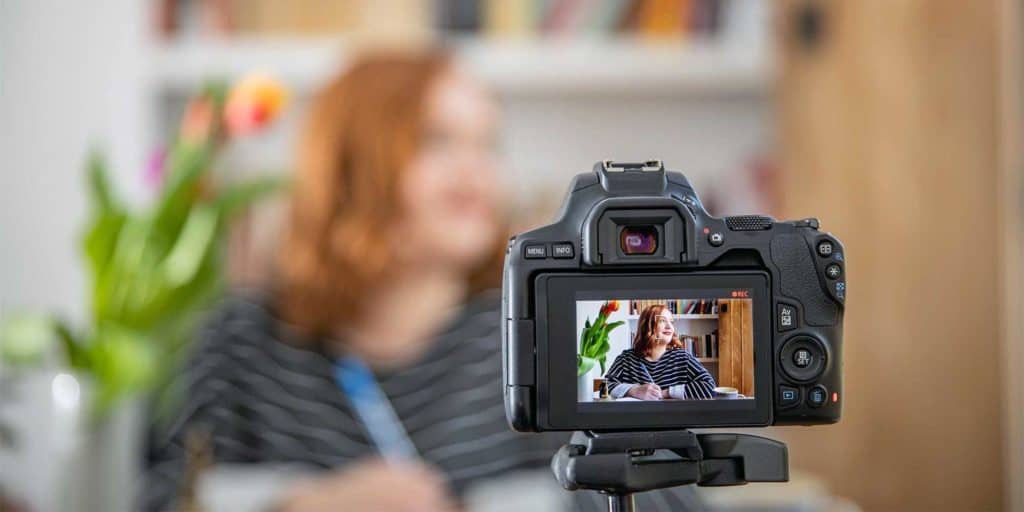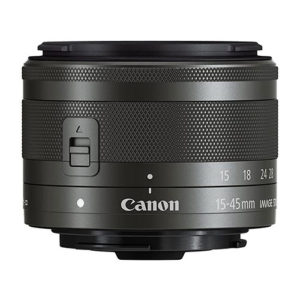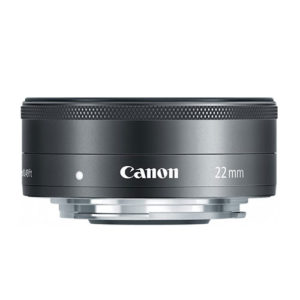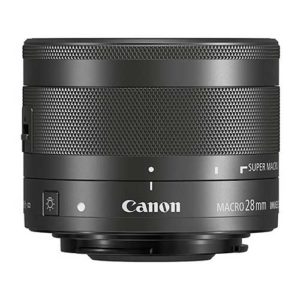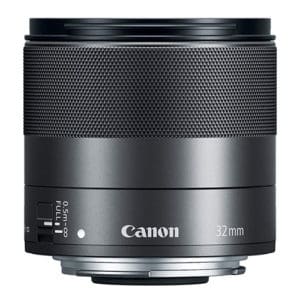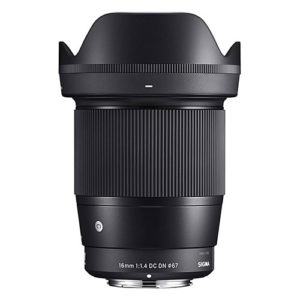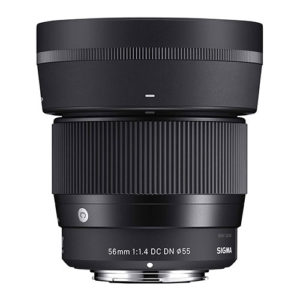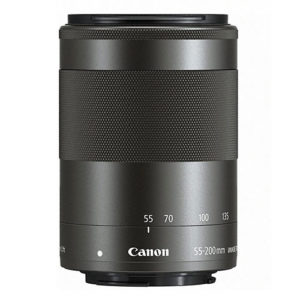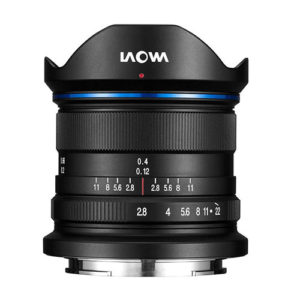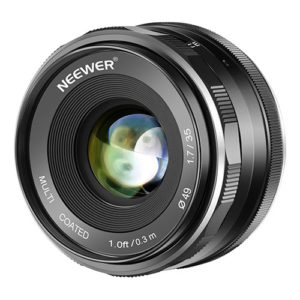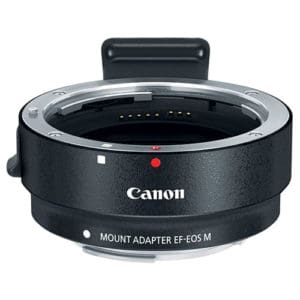The Canon EF-M mirrorless camera system is all about producing excellent quality images and video from a small form-factor camera system.
The result is a vlogger’s dream—a quality system that is easy to pack and easy to work with.
The camera has a limited number of native EF-M lenses available for it, but luckily the list grows every year.
Here’s a look at the absolute best EF-M lenses for videography and vlogging.
Best Wide-Angle Zoom Lens — Canon EF-M 11-22 mm f/4-5.6 IS STM
Canon makes two EF-M native lenses that can be considered “kit” lenses.
One is wide-angle, while the other (next on the list) covers subjects a little bit farther away. The 11-22 mm lens is right in the sweet spot for vlogging since it is one of the widest lenses you can get for the EF-M.
With it, you can do long shots or full shots, and it will work well in tight spaces for self-interviews.
In 35 mm terms, this is a 17.6 to 35.2 mm lens, which covers everything you’d ever want to do in the realm of wide-angle shooting.

The lens isn’t perfect, though. The variable aperture is a reasonably slow f/5.6 at 22 mm, which certainly isn’t going to be good enough for low-light shooting.
It has a built-in image stabilizer and the newer STM autofocus drive, both of which will help video shooting.
The lens is well-built, small, and lightweight, making it the best bang for your buck for most vlogging applications.
Best Kit Zoom Lens — Canon EF-M 15-45 mm f/3.5-6.3 IS STM
If you need a little more reach for your shots, the EF-M 15-45 mm is the lens for you.
It’s basically the same lens as the 11-22 mm, but with a slightly tighter zoom range.
In 35 mm equivalents, this is a 24-72 mm zoom, making it applicable for wide shots to close up footage.
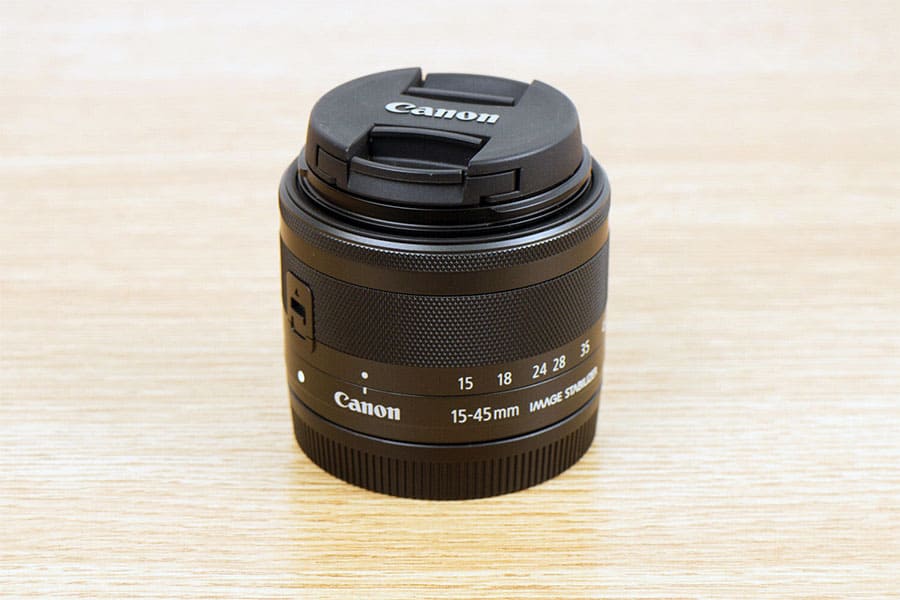
If the 11-22 mm has a problem with low-light performance, then the 15-45 mm needs an intervention. At the close-up range of 45 mm, the maximum aperture is a disappointing f/6.3, a full stop higher than its smaller sister.
It shares the image stabilizer and STM-driven autofocus system, though, so for daylight or well-lit shots, it should perform very well.
The aperture is disappointing, but it keeps the lens light-weight, small, and inexpensive.
If you are considering this one or the 11-22 above, I suggest watching this video from Chris Newnham:
Small Travel Video Lens — Canon EF-M 22 mm f/2 STM
The EF-M 22 mm is a fantastic wide-angle prime perfect for the vlogger on the go. It has two excellent qualities that make it attractive.
First, it’s faster than any of the zoom options for the EOS-M cameras by several stops. Secondly, it’s tiny.
This lens’s form factor is so flat that many people refer to it as a “pancake lens.”
Like many of the other Canon prime lenses, this one doesn’t have image stabilization.
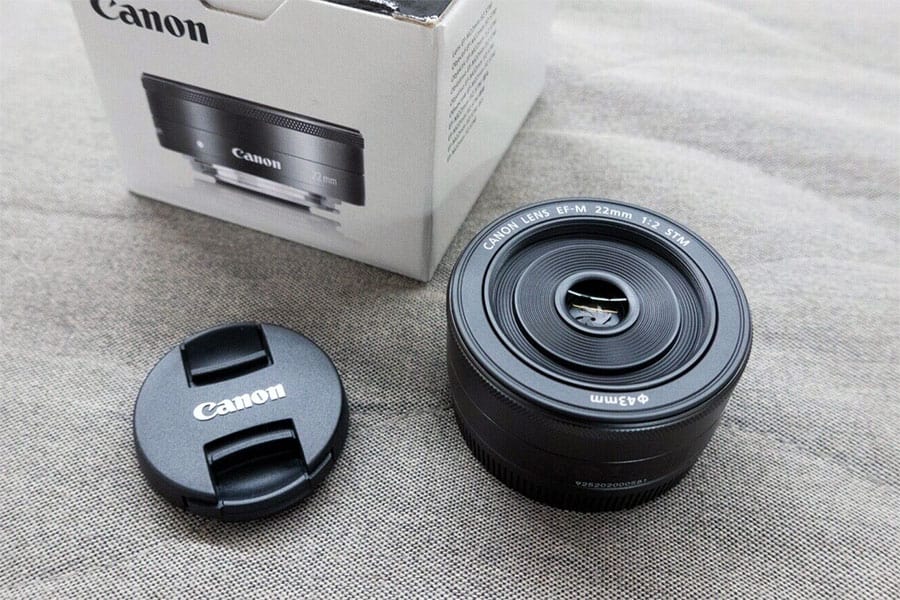
This lens will feel small and light on any EOS-M body and makes your camera more comfortable to carry and less conspicuous.
If you like to shoot footage on the street or value a small form-factor, you can’t go wrong with the EF-M 22 mm.
Best Prime Lens — Canon EF-M 28 mm f/3.5 Macro IS STM
Macro isn’t in the realm of many videographers, but if it’s something you’d like to try, the EF-M 28 mm f/3.5 Macro is worth checking out.
At 44 mm effective in full-frame terms, this lens is close to a “normal” 50 mm lens.
As such, it’s not terribly fast, but the versatility of having a macro-capable normal lens is creatively pretty interesting.
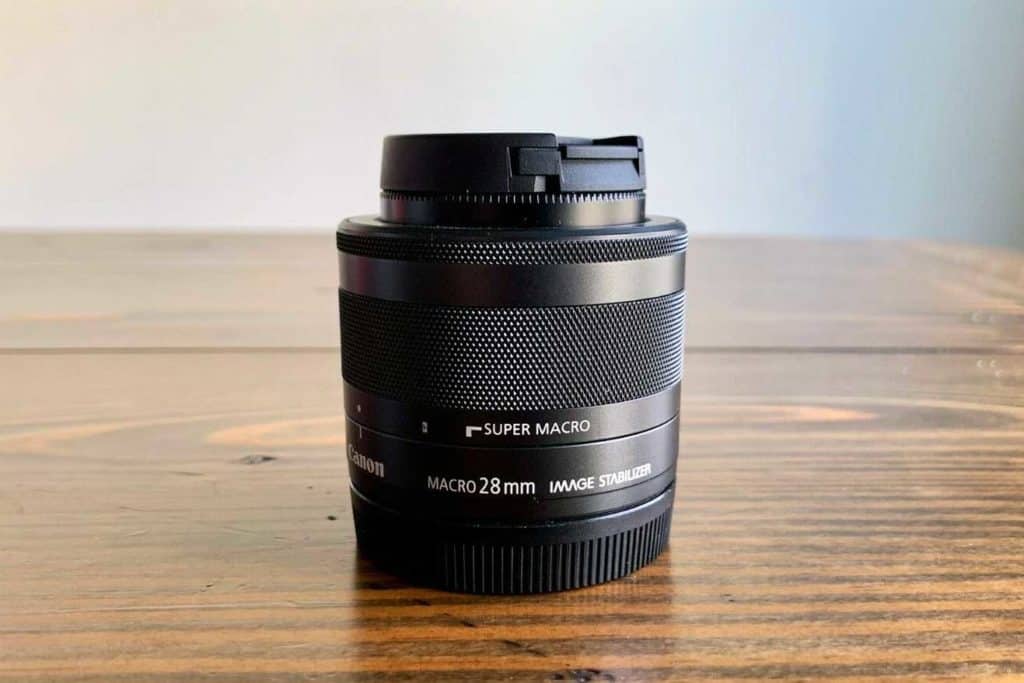
For macro shooters, the lens features a nifty built-in LED ring light. It has a focus limiter, too, which keeps the autofocus working quickly during regular shooting.
This is also one of the best EF-M lenses for video because it’s one of the only primes with built-in image stabilization.
Best Normal Prime — Canon EF-M 32 mm f/1.4 STM
If you need a faster normal prime, Canon makes the 32 mm f/1.4.
With an effective focal length of just over 51 mm, this lens is the closest thing Canon makes to a classic “nifty-fifty.”
It’s also the fastest option in the Canon EF-M lineup at f/1.4. Like most of the other Canon native EF-M lenses, the 32 mm features the super-quiet STM drive motor that won’t ruin videos.

Another similar option is the Sigma 30 mm f/1.4 DC DN Contemporary.
This lens is a direct competitor to the Canon option, and it saves you a few hundred dollars.
The Sigma lenses have an outstanding reputation, and all of their f/1.4 primes for APS-C sensor cameras are available for the EF-M.
These lenses have an excellent build quality and make sharp images with beautiful, soft bokeh.
Unfortunately, neither of these lenses has image stabilization.
Both are capable of video work, and their f/1.4 apertures can’t be beaten for letting in a lot of light.
Videographers just might want to take other steps to remove camera shake and keep the camera steady.
Best Wide-Angle Prime — Sigma 16 mm f/1.4 DC DN Contemporary
Sigma also makes a wider-angle prime, the 16 mm f/1.4. This is the best wide-angle option for the camera, but it lacks image stabilization like the other Sigma lenses.
It’s the only automatic lens that offers such a wide field of view coupled with a wide aperture. In 35 mm equivalent terms, this lens is 25.6 mm, making it reasonably wide-angle for long shots or establishing scenes.
The fast aperture opens up shooting at nearly any time of day for many locations, giving you the ultimate freedom in your lighting setups.
Best Close-Up Videos Prime — Sigma 56 mm f/1.4 DC DN Contemporary
A full-frame focal length of just shy of 90 mm makes the Sigma 56 mm an excellent option for close up or extreme close up shots.
Handheld video at these focal lengths becomes very difficult to capture without any shake, so a sturdy tripod is a must.
Plus, all three Sigma lenses feature large, smooth-operating focus rings that make focusing for video smooth and precise if you need to do it manually.
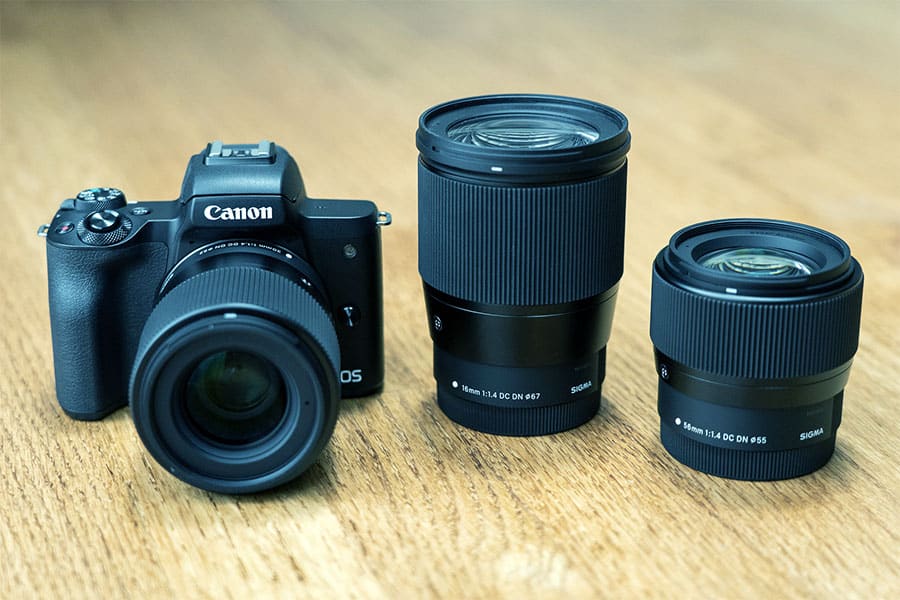
With a tiny form-factor, a professional-quality build with water and dust proofing, and fast apertures of f/1.4, the Japanese-built Sigma Contemporary primes are an excellent value for the EOS-M cameras.
If you like all three Contemporary primes for the EF-M, you can get them bundled together for maximum savings.
Best Telephoto Zoom — Canon EF-M 55-200 mm f/4.5-6.3 IS STM
Occasionally, videos require tight shots for super close-ups or distant wildlife.
The Canon EF-M 55-200 mm is suitable for such occasions.
It’s certainly not the best telephoto lens out there, but it’s naive to the EOS-M system, and it has a built-in image stabilizer, which is vital for this type of shot. Compared to other EF or EF-S lens options, this one is small and light for travel.
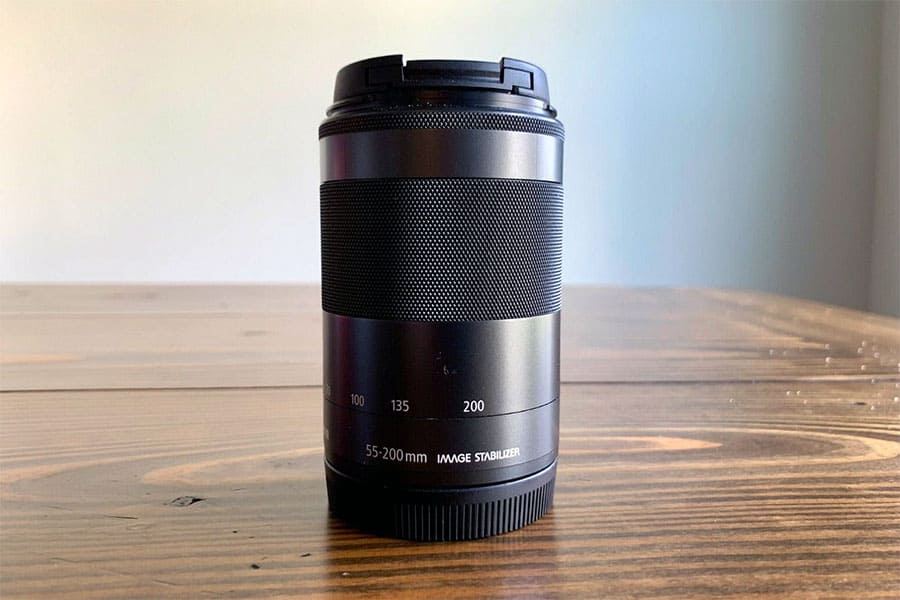
That’s a good selling point since this lens will likely spend a lot of time in your camera bag instead of on your camera. It’s only needed for the occasional videos.
Best Super Wide-Angle Prime — Laowa 9 mm f/2.8 Zero-D
Laowa makes a range of wide-angle manual focus lenses. The 9 mm is the widest lens you can get for the EOS-M system.
If you need to get super-wide shots for establishing footage or use it for interiors of tight spaces, this is the lens you need.
Unlike many lenses in this focal length range, this one is rectilinear, meaning that it doesn’t distort the image with a “fisheye” effect.
Best Budget Manual Prime — Neewer 35 mm f/1.7
If you’ve decided to give manual shooting a try, check out the options from Neewer.
They have both the 35 mm f/1.7 normal lens and a wide-angle option, the Neewer 25mm f/1.7.
Both lenses are fast and very inexpensive. Both sell for less than $100, making them a great way to give manual lenses a try.
If you have the kit lens and just want another lens that’s a little faster, pick one of these up and see how you like it.
EF-M Video and Vlog Lens Guide and FAQ
What To Look for in a Vlogging Lens
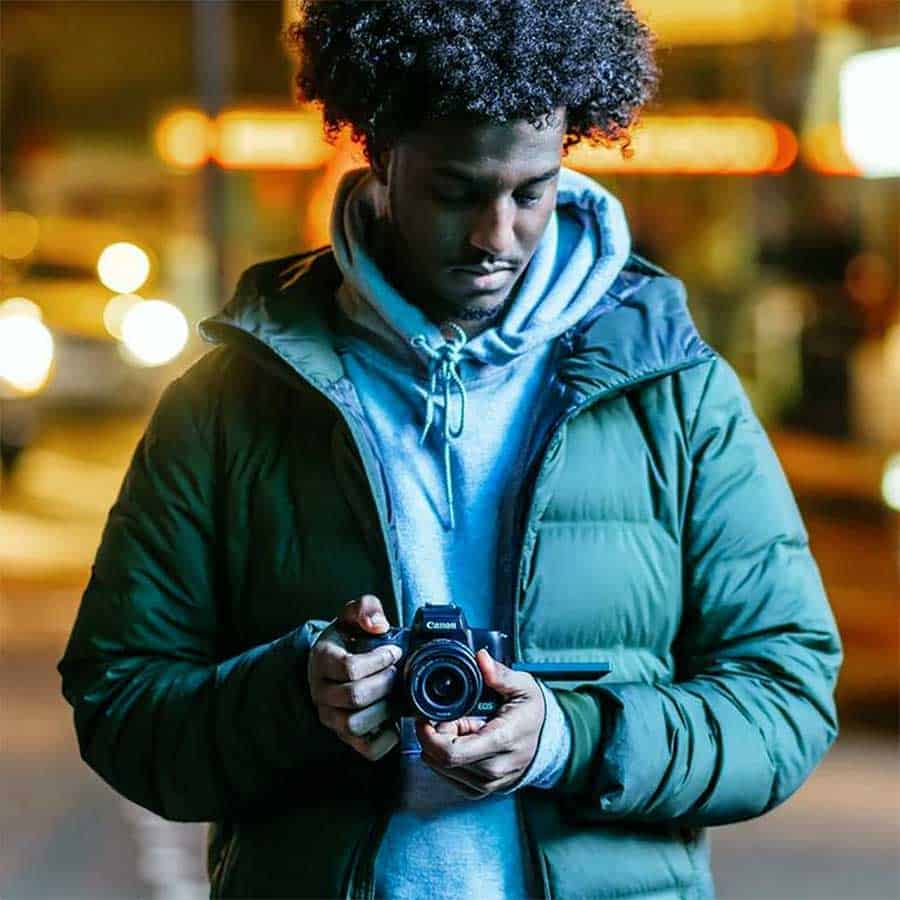
Video blogs cover all sorts of topics and many different formats. Finding a good camera body for your vlogging isn’t that hard, at least it’s not that hard when compared to finding the right lens.
In many ways, the lens is a bigger deal than the camera body because nearly any mirrorless or DSLR system can work for shooting vlog videos.
Primarily, the lens you choose will dictate the range of focal lengths that you can choose from.
Many people call this the camera’s zoom ability. How much can you fill in the frame when at wide-angle, and how tight can you get when you zoom in.
You can buy prime lenses, which cannot zoom at all, and zoom lenses, which are all limited in their zoom abilities.
This significantly affects how you use the camera. If you need to do a lot of interview-style shots from a close distance, you might want a wider-angle lens than the camera came with. If you want to go out and get wildlife shots or take other types of footage a long way from your subject, you will want to invest in a telephoto lens.
But there are other factors you should be on the lookout for when lens shopping, too. The widest aperture allows more light to enter the lens, making it better at shooting video in low light.
Are you planning to use lights to get your scenes adequately exposed, or do you need the camera to work well in dimly lit situations? Aperture is one factor that is very closely associated with cost—the widest aperture lenses are the most expensive.
Some lenses work much better for video than others. Since the EOS-M camera system was built from the ground up as a mirrorless system, video is one of its fortes.
Canon has spent a lot of time getting the EOS-M lenses to work well for video shooting, including adding new STM autofocus drive motors and adding optical image stabilization on some.
Both of these are essential things to have, especially if you’re planning to hold the camera by hand.
The overall size of a lens is an important factor, too, though some videographers might dismiss the idea.
Vloggers who travel will want to consider how much weight and physical space a lens takes up. If you can get by with a smaller lens, you’ll probably use the camera more often.
That’s simply because you’re more likely to have the camera with you since it’s less bulky and lighter.
Crop Factor Explained
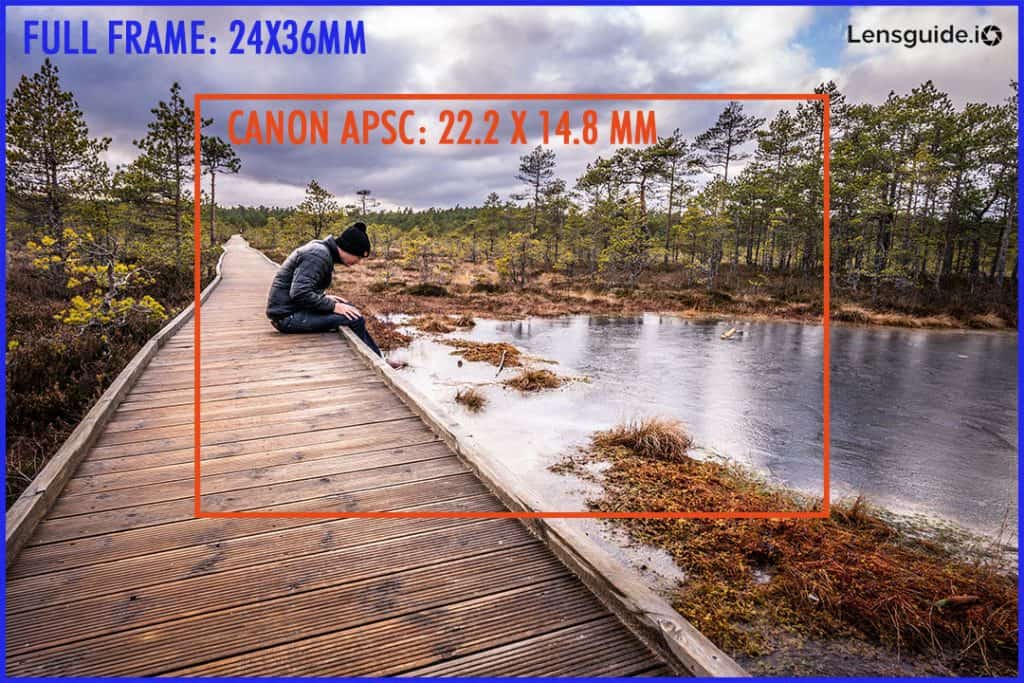
All EOS-M family cameras are cropped sensor cameras. When you shop for lenses, all of them are sold with focal lengths calculated based on a full-frame sensor or a 35-millimeter film frame.
Some digital cameras have full-frame sensors, but the EOS-M bodies all have what are known as APS-C sensors.
To figure out the effective focal length on your camera, you will need to apply the crop factor.
Since the sensor in your camera is smaller than the total amount a full-frame sensor would capture, you multiple the lenses’ focal length of the lens by 1.6x. So, a 35 mm lens would effectively be 56 mm on your EOS-M.
Are Kit Lenses Good Enough for Vlogging?
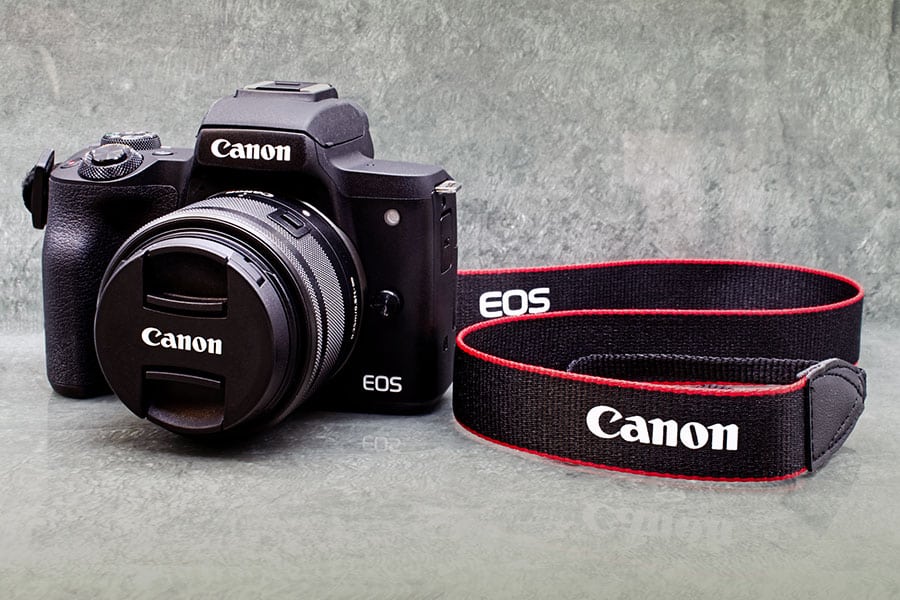
The lens that comes with the camera when you buy it is called a “kit lens.” Canon offers a few kit lenses with the EOS-M cameras, and none of them are bad lenses. But they might not do precisely what you want them to do, so most photographers wind up buying a specialized lens that precisely suits their needs.
Then they have the kit lens as a backup or keep it to use as a travel lens.
Most photographers and videographers find the kit lenses get them started, but eventually they outgrow them.
They are designed to be basic and inexpensive; they get you going with no fuss.
Most kit lenses are zooms that cover a standard range of focal lengths, usually from 28 to 70 mm in 35 mm equivalent terms.
The most commonly included kit lens with the EOS-M cameras is the EF-M 15-45 mm IS STM lens. In 35 mm equivalents, this lens is approximately 24 to 72 mm, putting it right in the area that most photographers and videographers like to use the most.
Prime vs. Zoom Lenses—Which is Best for Video?
Prime lenses are those which have no zoom. That might sound awful at first, but the concept is sound when you think about it. Prime lenses are smaller and less expensive than zooms.
They also typically produce better image quality than zooms since the manufacturer can fine-tune the optics for only one focal length.
Of course, picking just one focal length that will work all the time is nearly impossible.
Photographers and videographers that use primes usually have a collection of different focal lengths on hand. Typically, they will have a wide-angle 35 mm lens for landscapes or indoor shots, a “normal” lens around 50 mm for most of their work, and a telephoto lens between 75 and 105 mm for close-ups and interviews.
Using a prime lens takes a little more planning, but it can produce better results than a zoom lens once you get used to it.
For video, it’s essential to realize that it’s nearly impossible to zoom while recording. The lenses that allow you to do so smoothly and seamlessly are super expensive. The better solution is to use a gimbal or steady-cam to move the camera, making a prime lens all the more attractive.
There are some zoom lenses available that have a power zoom function. This works similar to old point-and-shoot cameras or camcorders where a servo motor moves the lens zoom for you.
The results are smoother than you’d be able to accomplish by hand but still choppy and difficult to use.
Is Autofocus Important?
While lens shopping, you will likely find many inexpensive lenses that will work on your EOS-M camera with manual focus. Several manufacturers are capitalizing on this market since a fully-manual lens can be made for hundreds of dollars less than an automatic lens.
These lenses usually have excellent optics, but going old-school and fully-manual may not be right for you.
The manual lens market is growing mostly because of videographers. Many kit lenses and other less expensive autofocus lenses have very noisy motors, and the video can pick up the grinding noise. The solution that some video shooters opt for is a cine-style lens.
Cine, or cinema, lenses typically have geared focus and aperture rings that allow for silky smooth transitions on video. These lenses cost thousands of dollars, but some companies are making inexpensive manual lenses that come close enough to the experience to make videographers happy.
Can you live with manually focusing every shot?
This is a question of style and how you shoot your videos. If you need to set up the camera on a tripod and then step in front of it to record a self-interview, chances are a manually focusing lens is going to be far too cumbersome for you.
If, on the other hand, you’re behind the lens while recording all of your footage, you may love the creative possibilities that a manual focus lens affords.
It’s also worth analyzing how often you need autofocus to track a moving object. If your videos or vlog are about sports or wildlife, you might need a capable autofocus lens that can keep up with your subjects.
Yes, you can do this with a manual focus lens, but the chances that it will get botched by jerky lens motions or camera shake are very high.
If you aren’t sure whether you can live shooting in manual mode, try it out for a week or so with your kit lens.
Just select manual mode, and don’t cheat. See how hard it is, and whether or not you could live like that. Of course, a manual lens will have an easier focus ring to use that will likely move smoother.
How Do You Shoot Smooth Video Footage?
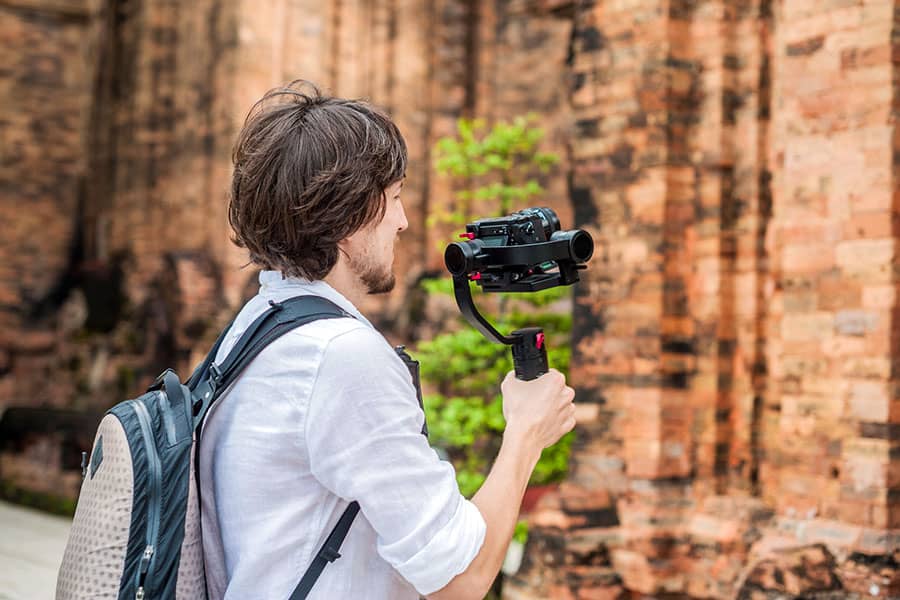
One of the biggest problems that new video makers have is getting their footage stable Shaky videos make the audience sick, and it makes your videos look amateurish.
Even single-camera and handheld video used for TV and movies is shot with very complex stead-cams, boom arms, and gimbal stabilizers to avoid that shaky look.
So how can you emulate that with your EOS-M for your vlog? Here are a few tricks.
The first thing to realize is that you risk making a nasty shake any time you move the camera.
If the camera is going to be moved during shooting, you need to take some precautions to ensure the footage will come out usable. So step one is minimizing these times. Most of the time, try to record using a sturdy tripod.
Your tripod should have a pan-and-tilt head. These allow you to move the camera either up and down or left and right very smoothly. It’s an excellent way to do following shots.
It’s limited, but it can be done smoothly without shake. The better option is to record most of your shots with the camera stationary on the tripod and then edit in a few panning or zooming shots later in post.
When you want to shoot a motion shot, work out ways to keep the camera as stable as possible. The first thing that will help dramatically is to use a lens that has optical image stabilization (Canon IS).
This will help you keep the footage smooth, but it has its limits. Some cameras have stabilization built-in to the camera body (in-body image stabilization, or IBIS), but Canon has not yet added that to the EOS-M lineup.
Even with a stabilizer, you’ll want to do more to keep the camera steady. The internet is chockablock full of grips and mounts that allow you to mount the camera on a frame and hold it steady as you move and pan it.
There is also a world of motorized slides and booms available online.
You’ll have to figure out how you want your shot to flow and then figure out the tools that will best help you get the smoothest results.
How To Use Old/Vintage Lenses With Your EOS M
If you decide to give manual focus lenses a try, you’ve got many options. Mirrorless cameras are ideally suited to mount whatever type of lens you want. Old Nikon F-mount or Canon EF-mount manual lenses can be used, as can any lenses from an SLR or rangefinder-style camera.
All you need is a simple adapter tube, and since these lenses are fully manual, the tubes are simple and inexpensive with no electronics.
If you choose to adapt an older lens for your camera, do a quick web search to see if anyone has already tried it.
Some of these lenses produce color fringing or distortions when mounted to mirrorless cameras. Most are minor and can be corrected, but it’s worth researching to see if your lens and camera combination has any known problems.
It is worth noting that if you choose to mount a fully-manual lens to your camera, not only will the autofocus require attention, but so will the aperture setting.
This is usually less of a problem, but some videographers like to change the iris during a shot.
Older lenses usually have clicks on the aperture ring, so doing this while recording is a bad idea. Some lenses can be de-clicked, and newer manual lenses are usually sold with a de-clicked option.
Besides the focus and aperture, all of the data normally transmitted from the lens to the camera is also absent. The camera usually records the lens type in the image file’s metadata, but that won’t happen with an old manual lens.
Using EF or EF-S Mount Lenses with your EOS-M
One of the most significant advantages to choosing Canon’s first mirrorless system is the access to the many great lenses that Canon has manufactured.
While the EF-M is a newer lens mount for the company, they went ahead and made an adapter so that you can use any of the older SLR/DSLR lenses on your EOS-M body.
The Canon EF-EOS M adapterallows you to use any EF or EF-S lens, which opens up hundreds of more options for you.
It also improves the odds that you can find less expensive options on the second-hand used market if you desire.
The Canon adapter includes the pin connections so that all EF lenses will retain their full functionality.
All autofocus, image stabilizers, and EXIF metadata should work seamlessly.
Conclusion
The Canon EOS M cameras are solid video and vlogging platforms as long as you can find the right lens to suit your needs.
There aren’t as many options available as some other camera systems, but there are plenty of lenses in the lineup to meet most videographers’ needs.

